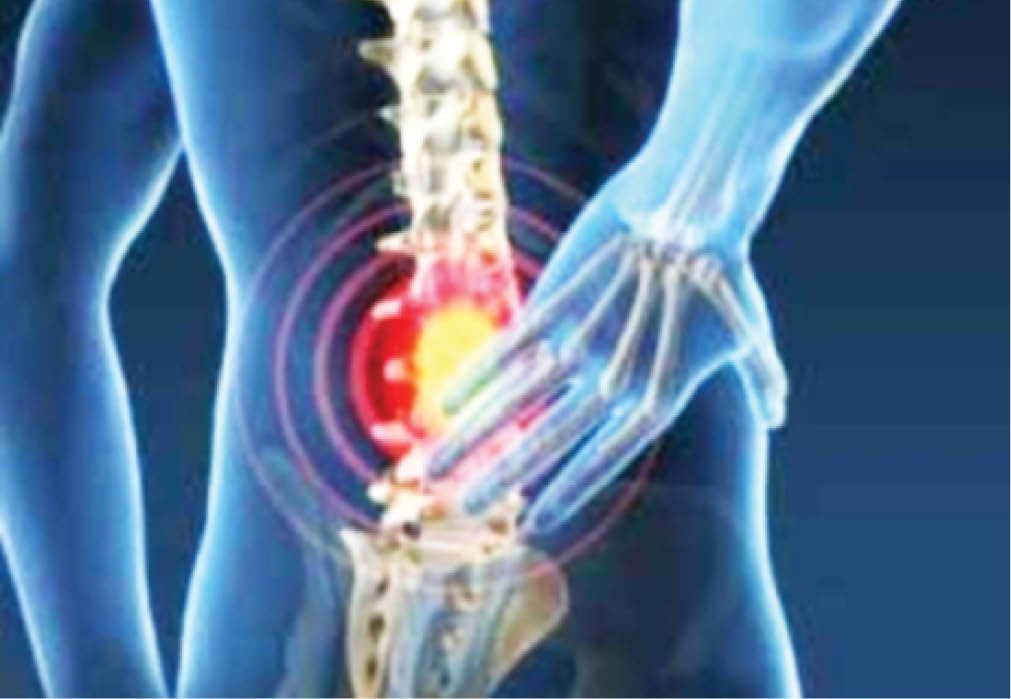Idemudia felt pain in his lower back, and it was so severe that it affected his daily activities.
He said he visited several hospitals before he was treated by a physiotherapist.
- Is chronic kidney disease inevitable in hypertension or diabetes?
- 1,110,820 Nigerians received first dose of Astrazeneca vaccine — Ehanire
According to Thomas Akingbade, a Clinical Physiotherapist with Central Hospital Benin, the lower back, also called the lumbar region, is the area of the back that starts below the ribcage which supports the weight of the upper body and provides mobility for everyday movements, such as bending and twisting.
“Muscles in the lower back are responsible for flexing and rotating the hips while walking, as well as supporting the spinal column. Nerves in the lower back supply sensation and power the muscles in the pelvis, legs and feet,” he said.
Akingbade explained that most acute lower back pains result from injury to the muscles, ligaments, joints or discs of the lower back, adding that the inflammatory healing response following injury to lower back structures can cause severe pain.
“There is a significant overlap of nerve supply to many of the discs, muscles, ligaments and other spinal structures, and it can be difficult for the brain to accurately sense which is the cause of pain.
“For example, a degenerated or torn lumbar disc can feel the same as a pulled muscle – both creating inflammation and painful muscle spasm in the same area. Muscles and ligaments heal rapidly, while a torn disc may or may not heal but the duration of pain helps determine the cause.
Symptoms
Akingbade said lower back pain can present with a wide variety of symptoms.
“Low back pain may start suddenly, or it could start slowly, possibly coming and going and gradually get worse over time,” he stated.
He said, depending on the underlying cause of the pain, symptoms can be experienced in the following ways:
Pain that is dull or achy and localized to the lower back; stinging, burning pain that moves from the lower back to the back of the thighs, sometimes into the lower legs or feet and can include numbness or tingling sensation.
Others are muscle spasms and tightness in the low back, pelvis and hips, as well as pain that worsens after prolonged sitting or standing among others.
He said there are three types of lower back pains, namely acute pains, subacute and chronic.
“Acute pain is the type of pain that typically comes on suddenly and lasts for a few days or weeks, and is considered a normal response of the body to injury or tissue damage. It gradually subsides as the body heals.
“Subacute lower back pain often lasts between six weeks to months and is usually mechanical in nature (such as a muscle strain or joint pain). It is prolonged.
“Chronic lower back pain, usually defined as lower back pain, can last up to over three months. This type of pain is usually severe, does not respond to initial treatments, and requires thorough medical intervention to determine the exact source of the pain,” he said.
The physiotherapist said the predisposing factors that may lead to lower back pain include athletic activity, heavy lifting, throwing, moving luggage, traumatic injury, kidney infection, pregnancy, osteoporosis, enlarged prostate, ovarian cyst and ageing.
Diagnosis
Akingbade explained that the diagnosis involves a review of the history of the illness and underlying medical conditions as well as a physical examination.
He said, “It is essential that a complete story of the back pain be reviewed, including injury history, aggravating and alleviating conditions, associated pain symptoms (fever, numbness, tingling, incontinence, etc.), as well as the duration and progression of symptoms.”
Aside from routine abdomen and extremity evaluations, rectal and pelvic examinations, other tests may include blood and urine tests, plain film X-ray tests, magnetic resonance imaging (MRI) and tests of nerves and muscles, using Electromyograph (EMG) and Nerve Conduction Velocities (NCV) check.
Management
Akingbade noted that the first line of management for lower back pain is self-care remedies, which include a cold pack (if the pain is excruciating), heat pack, topical analgesics, avoiding re-injury, eliminating heavy lifting, mild massage, bed rest and taking over-the-counter pain-relieving medications.
He cautioned that massaging using the palm or heel of the foot to exert deeper pressure on the painful lower back or sharp, extreme and sudden twisting, which elicit snapping or cracking sound of the lower spine, must not be applied, as these may lead to permanent injury of the lower back structures.
“If the pain persists or becomes more severe after a few days of applying self-care remedies, one must consult a medical doctor or physiotherapist,” he said.
The expert said the treatment outcomes for lower back pain depends on its precise cause, noting that acute strain injuries generally heal entirely with minimal treatment while bony abnormalities that are irritating the spinal cord may require significant surgical repair and the outcome depends on the surgical result.
He added that long-term optimal results often involved medical rehabilitation programmes that involve physiotherapists.
He said the only prevention of lower back pain is avoiding injury to the lower back. Additionally, conditioning exercise programmes designed to strengthen the lumbar area and adjacent tissues can help to minimize risk of injury to the lower back.
“Specific programmes to relieve and prevent back pain can be designed with the help of physiotherapists and other healthcare professionals,” he said.

 Join Daily Trust WhatsApp Community For Quick Access To News and Happenings Around You.
Join Daily Trust WhatsApp Community For Quick Access To News and Happenings Around You.

